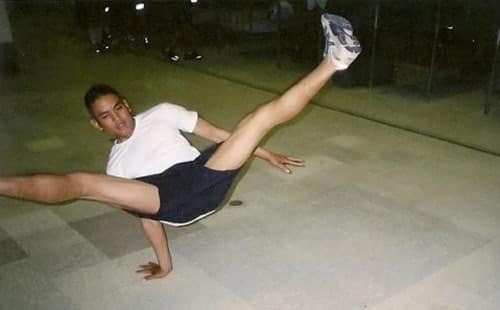
Last Friday I was watching a video of Pernell Whitaker when I said to myself, “Damn! How does he MOVE like that?!” I wasn’t looking at his tricky counters or flashy defense. I was mesmorized simply by his incredible body control. I admired the way he waved hands and wiggled his shoulders in front of opponents, even the way he nonchalantly walked around his opponents. I was amazed by the way he MOVED!
Most fighters don’t understand body movement. I was fortunate enough to train in many sports as well as formal dance training. The truth is: I wasn’t really a talented fighter, I only knew how to use my body better than others.
And you won’t be a good fighter until you learn how to move your body…
*** This article is important not only for fighters, but for all athletes and actually everybody. As human beings, we are all self-responsible in maximizing the use of our bodies (limbs, organs, brains, etc). People who make the most of their bodies will be the happiest and most successful individuals in life.
Position, Movement, and Displacement
There are 3 ways of moving the body: you can position the body, move the body, or displace the body. Understanding the difference between these 3 categories of movement will improve your athleticism. Understanding how different boxing techniques fit into these 3 categories of movement will improve your fighting!
Position
“to position” means to stand in a particular way
A position is a static frame or solid stance. To position yourself would be to hold yourself still without movement. Fighters will typically seek out different positions in order to punch, defend, or move. Superior fighting positions are expected to offer more power, more balance, speed, or strategic advantages.
Movement
“to move” means to pass from one position or place
to another
Movement can be used to change positions or changes places. You can use movement while staying in one place (ie: rotation) or while moving to another placing (ie: walking).
Displacement
“to displace” means to move from one place
to another
Displacements are used to move yourself from one place to another. An example of displacement would be to walk yourself from your bedroom to the kitchen. A displacement is basically traveling from point A to point B.
Movement vs Displacement
All displacements require movement,
but not all movements require displacement!
Remember, there are 2 kinds of movement. There are “stationary movements” which are used to change the body’s position while remaining in place (such rotating the shoulders). And then there are “displacing movements” which are used to change the body’s placement (such as traveling from one place to another). Stationary movements are most often used for generating power and/or directing power at different angles/positions. Displacing movements are most often used for moving the body around the ring.
All displacements require movement.
You must move your body in order to travel from one place to another. Can you imagine me trying to get to the bathroom without moving my arms or legs? Even if I moved only my legs but not my arms, it would still feel pretty awkward.
Trying to hold a position while trying to displace yourself is a mistake I see often in boxing. It’s usually a beginner trying to maintain his boxing defense while jumping in. He’ll hold his upper body in a stiff position while sliding in with only his legs. It not only looks weird, it wastes energy. The best way to move around the ring is to relax and let your whole body move (especially your upper body) when you displace yourself. I’m not saying for you to move unnecessarily but rather to let your hands shift a bit (similar to how your arms swaynaturally during a walking movement).
Not all movements require displacement.
Great fighters have great movement,
ineffective fighters have too much displacement.
A common complaint about beginners is that they have “too much movement”. The saying would be more accurately re-phrased as “too much DISPLACEMENT”. Beginner fighters don’t know how to move, and so they substitute movement with displacement. The poorer their movement technique, the higher amount of displacement needed to create the same effect. To outbox an opponent is really to OUTMOVE him.
They don’t know how to rotate, and so they “fall” in an effort to create punching power. They don’t know how to take a step in quickly, and so they “jump” around the ring wasting energy. Unnecessary displacement is not only a waste of energy, it can leave fighters out of position and unable to counter back. If only they had better movement technique, they wouldn’t have to displace themselves so much.
Punching power is best generated from a stationary movement rather than a displacement movement. Sure, it’s possible to generate power through displacement by running into your opponent but this technique exhausts too much energy and requires too much time. Knowing this you can now avoid displacing your body (and wasting energy in the process); you can simply leave your body in one position and move in a manner that creates power (ie: rotation). The failure to understand the difference between movement and displacement is a common reason why many fighters/people are poor athletes! (“poor athlete” meaning not very good at moving their bodies)
Positions do NOT exist
Ughhhh…I’m already bracing myself for the amount of explanation needed for saying this. Here we go, further down the rabbit hole!
Positions do not exist in boxing. The concept of “position” existed as a way of referencing MOVEMENT. Let’s use an example of walking motion for demonstrative purposes:
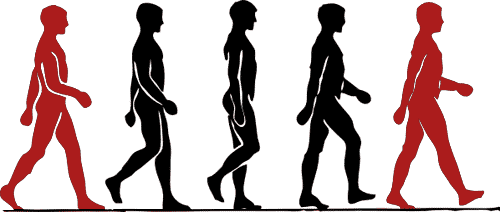
Here I highlight 2 key positions of a walking MOTION. (Notice that I said “walking motion” and not “walking position”.)
Everybody recognizes walking as the repetitive movement of putting one foot in front of the other. The image above is highlighting the more obvious walking positions—which is when one foot is clearly in front of the other. But what about all the other positions??? If I was to slow down a video of a person walking, I could take a hundred snapshots of infinite number of possible positions. There’s the moment when the heel touches the ground, then when the toe touches the ground, then when the knee bends, then when the feet are together, etc. All these other positions occur as often as the highlighted ones.
My point is: there are ultimately infinite number of possible positions in any given movement. Sure, you can pull your hair out and over-analyze MOVEMENT by trying to remember every position….OR, you can be smart and focus on the INTENT of the movement. Instead of trying to learn how to walk by looking at a bunch of pictures of legs in different positions, you can learn by understanding the reason for those positions. The best way to make someone walk is to tell him to “move forward” rather than say “stick one foot in front of the other while bending and unbending the knees touching the ground from heel to toe”.
The “perfect position” doesn’t exist
when you’re fighting a moving opponent.
The other day, one fighter asked me for the “perfect left hook position”. He wanted to know if his elbow was too high or too low, if his fist should be vertical or horizontal, etc. I smiled a little before answering, “it depends”. Is your opponent standing high or ducking down low? Is he leaning forward or leaning backward? What is your opponent’s NEXT movement? What is YOUR next movement?
Position doesn’t matter so much anymore. What’s most important is that your fist moves into his face! When you value position over movement, you fail as an athlete. Of course you must still know the key positions of throwing a proper left hook, but knowing the PURPOSE of the movement is far more important than learning the positions. Think of positions as a bunch of dots. Boxing movement is not merely to connect the dots but rather to flow through the dots so smoothly that the dots no longer exist. When you walk, are you thinking about all the possible positions of holding your legs? (I’ll assume your answer is no.)
Movement is far more important than position!
It’s not about the position you use but moreso how you MOVED to your position. Ultimately, how you threw a punch will have more effect than the position in which it landed. A punch carries deadly power not because your fist positioned itself on your opponent’s chin but because it was moving when it made contact!
And so we come upon our strange discovery once again: there is no such thing as a position (during movement). The moment you stop to analyze movement, you’re no longer moving.
The Importance of Movement in Fighting
The human body was made to move
The human body is not a stationary rock, nor a frame to be held. We are made to move. We have moveable joints and intricate muscles. Moving is far more comfortable than staying still! When you look at the human body, you will see that we are really only meant to be in maybe a few positions comfortably like standing, sitting, or laying down.
Our bodies have a limited range of positions for many reasons. We like to be upright and be able to see things from a flat viewpoint. Our bodies are more comfortable in horizontally symmetrical positions as opposed to leaning over to one side which would upset our spines/equilibrium. We do not like to curl around like a snake nor grip from a diagonal like a squirrel or spider. The human body does not have a wide range of comfortable positions.
We do however have a wide range of motions. We can lift, carry, walk, run, swim, twist, jump, etc. We cannot “out-position” a snake or a squirrel but our limbs can certainly express a wider range of movements over other living creatures. I really can’t think of any animal that can out-move or out-express (out-dance) a human.
Boxing is not about position or displacement. You don’t get points for having the best stance or covering the most distance. You win a boxing match by having the more effective offensive/defensive boxing MOVEMENT. If you want to win a fight, you must be the better mover!
Great fighters are ALWAYS in motion
There are no boxing positions,
there are only boxing movements.
You must remember that you are ALWAYS IN MOTION! The fighter that understands he is always in movement will always out-move the fighter that is WAITING TO MOVE. Knowing this is what makes you faster and more reactive. You might be moving slower or faster at times but you must ALWAYS BE IN MOTION.
EVERYTHING IS MOVEMENT!
- positions are movement (they are moments of movement)
- movements are movement
- displacements are movement
- a punch is a movement
- a block is a movement
- even a boxing stance is a movement
Boxing defense is a movement,
not a position.
Ask a beginner to show you a punch and he’ll move his hand through the air. Ask him to show you his defense and he’ll show you a position. That right there is part of the problem—beginners think of defense as a position. It’s no wonder most beginners can’t defend themselves! They actually think “positioning” their hand in front of their face will protect them against a punch. In reality, it’s the subtle MOVEMENT of the body that repels punches by using the strength of the core projected through their arm. It sounds overly complicated, right? But imagine how much better your defense would be if you approached defense as a movement rather than a position.
The same approach applies to counter-punching. You must learn how to counter against movements, rather than countering against positions! The average fighter is wasting his time learning how to counter the POSITION of a right hand. Day after day, I see fighters drilling the counter for a right hand by positioning themselves during mitt drills. It’s surprisingly ineffective. They should be sparring and learning how to counter the MOVEMENT of a right hand rather than countering the position of a right hand. (I know, it sounds funny right?)
Nobody throws the right hand the same way! All opponents have their own “positions”, their right crosses travel through different points (“positions”) in its trajectory. And therefore you can only counter right crosses by learning the MOVEMENT of the right cross, not the position of the punch itself. Do the basic drills to learn the counter position but start varying the right hands in order to develop your awareness of its movement.
Let me give it to you this way: by the time your opponent’s right cross LOOKS like a right hand, you are too late! You can only counter an opponent’s right cross by reacting to his movement BEFORE it becomes a right cross!
Beginners do not know how to move
All boxing technique is really about boxing movement. And beginner boxers don’t know any boxing technique and therefore don’t really know how to move. What happens next is natural; they try to make up for their inability to move effectively by focusing on position and displacement. It’s hard (for beginners) to understand boxing movement simply by watching others, and so the beginners will look to the more obvious visuals such as how others positioned themselves or how far they moved their body from one place to another.
What happens when beginners over-emphasize position
Every beginner’s natural tendency is to place too much emphasis on position. Beginners want to know where to place their hands, where to hold their head, how to angle the shoulders. Should the elbows be in or out? Should the knees be bent or not? “Is the shoulder roll the best defensive position?” Many beginners think the “shoulder roll” is actually a position—HA! Here’s where I remind you again that all boxing is movement. The shoulder roll is simply a movement. It can be done regardless of what boxing stance or position you’re in. The angle of how I land my fist matters little in comparison to the movement I used to generate the power.
The worst part of about focusing too much on position is when it starts to affect their movement. Beginners are huge offenders of always trying to “HOLD” a position. Their upper bodies become tense and predictable because they’re always in the same position. Their movements become stiff and limited because they’re trying to hold parts of the body still while trying to move. Trying to hold a position while displacing yourself will never be possible. You’re either doing one or the other. (Either you’re staying still or you’re moving, but not both.)
I challenge you to hold your boxing stance while taking 3 steps forward. Only 2 things can happen: either you will wobble awkwardly like an off-balanced table OR you will have to jump around in order to maintain a balanced position. (Want to know the secret to slick footwork around the ring? Move your arms slightly almost as though you’re walking. Try watching the pros and notice how they break form as they shuffle around the ring!) Trying to hold a position while moving is difficult if not impossible because you’re basically creating conflicting movements! It’s no wonder beginners get tired so fast!
Try this for 5 minutes and tell me which is more tiring. Standing perfectly still? Or standing while swaying gently from side to side?
Again, all positions are simply naturally occuring moments during movement. If you try to hold any position, you will get tired (because you’re exerting force against natural movement). There is no such thing as advanced position, there is only advanced movement.
What happens when beginners over-emphasize displacement
The next natural tendency is the beginner’s emphasis on displacing himself during all movements. The two most common reasons for over-emphasis of displacement is usually power or getting into range. If nobody ever taught me how to punch, I would probably try to break a door by throwing myself at it. If nobody ever taught me how to step-drag in a boxing stance, I would probably try to move around the ring by jumping around constantly. This is EXACTLY how beginners move and I don’t blame them!
When a fighter doesn’t know how to generate power from a stationary movement, he will try to create power through displacement. He will try to fall or lean into his opponent or even jump off the ground while throwing a punch. He doesn’t know how to rotate powerfully and so instead he’ll try to displace his body to use it as punching force.
When a fighter doesn’t have the skills to control the distance and measure his reach, he will be forced to travel across large distances. The beginner doesn’t know his exact range and so he’ll always be too far and too close. He doesn’t know how to step-drag quickly and so he relies on jumping to cover the distance. He’s probably not very good at defending or moving backwards and so he’ll jump again or maybe lean back off-balanced. Bad balance is a common reason for excessive displacement. Bad balance will make him fall all over the place and spend extra energy to move around and fight back.
Johnny, how do we become better movers?
Develop your movement muscles
Most fighters are not giving their bodies a balanced conditioning program. The next time you get out of the shower, study your body carefully. The biggest muscles in your body should be the most conditioned. The most commonly neglected areas I see are the core, the back, and the legs. It’s fun to workout the chest and shoulders and arms, but do know that these muscles are relatively unimportant to your body’s overall movement capability. A strong core will move and punch far more effectively than a strong chest/arms.
Body movement is not only about power. Your muscles also need endurance, speed, flexibility, and coordination. The most important aspect of muscle ability is control! Being able to shoot your fist out powerfully is worthless if you can’t control it’s accuracy. Body control is what sets the “fighters” apart from the “athletes”.
Do what is easy
Your technique should make boxing easier and more effective. Good movement technique should make it easier for you to move, not harder. Do what is easy; do what feels natural. It’s important to know that moving in a lazy way is not the same as moving in an easy way. Try to do your movements fast and see if it’s still easy. If not, then you must find another way.
It’s ok to use “bad technique” if that’s what feels most comfortable for you. Different levels of fighters are comfortable with different techniques. The best technique is the one that feels easiest to you right now. Don’t worry: when your skills and coordination improve, your technique will change naturally.
Is there such a thing as TOO much movement?
Absolutely! I did say that you should always be moving but this doesn’t mean you should move more than is necessary. You should move slowly or calmly when you’re not exchanging punches. There is no reason to use any more movement than is necessary to outbox your opponent. Good technique will allow you to win fights using less movement. Good movement technique will generate more power, more speed, and superior “boxing effect” while using less movement effort.
You will never hear people complain about advanced fighters moving too much because they are moving effectively. Nobody can hit them because they never stop moving effectively. Moving ineffectively however will always be seen as “too much movement”. As explained previously, the most common form of wasted movement is unnecessary/unwanted displacement. Poor technique will force you to displace your body often and waste energy, sometimes you will even fall out of position and get countered.
All of boxing is movement.
Great fighters see everything in boxing as movement. It sounds like common sense but this concept is still forgotten when I hear people discuss boxing (even on EXPERTBOXING!). Whether you realize it or not, whether it appears to be or not—EVERYTHING IS MOVEMENT.
This article is really only the basics of body movement. I have barely scratched the surface of boxing movement technique. Read this, understand it, digest it…and then let me know when you’re truly ready to learn how to box. 😉







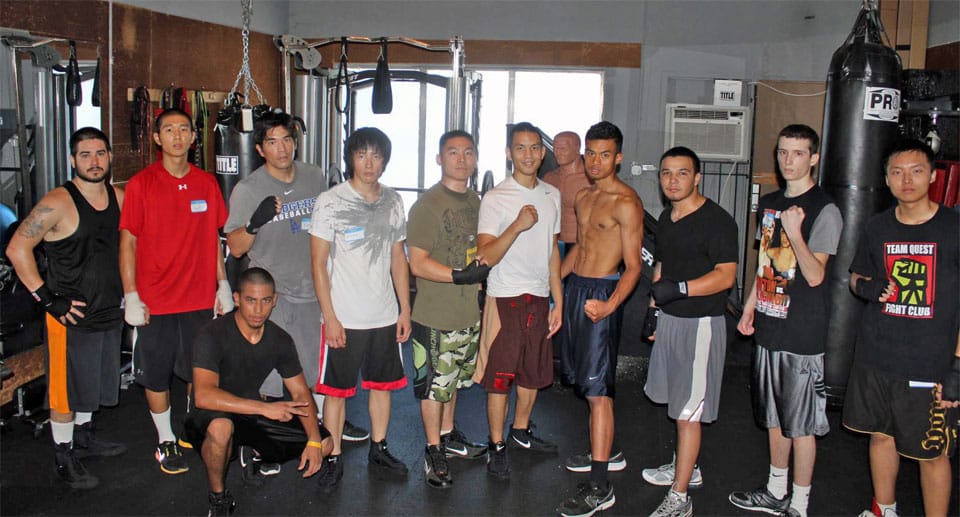
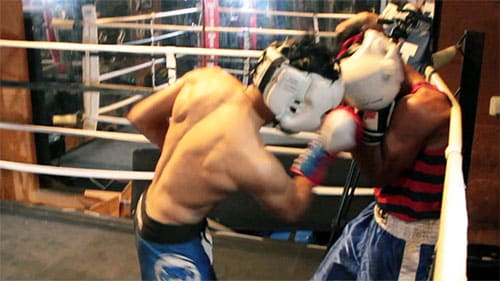
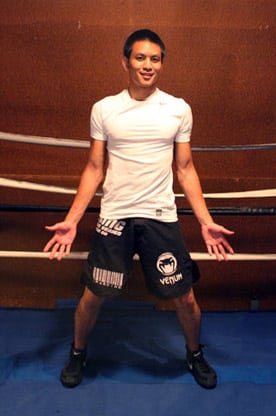

Very helpful article. Thank you.
Athletes with the best body control: Gymnasts!!! It is amazing what those people can do with their muscles!!!
Thanx 4 the article,gud job!!
Pretty sure this article was written for me!
FEED ME, FEED ME, FEED MEEEE
u r one wise mofo! once someone find s their natural flow its easy! i hear ya on the no such thing as position cuz everything just keeps goin so just flow not resist!
this article is exactly why i promote other sports to improve boxing skills, basketball, maybe football, soccer, etc body control is important for all athletes
Amazing article! This is something I have been struggling with recently, so thank you!
ya wow great blog post and i was wondering if you could recommend some film of pernell whitaker?
I would watch every video of him! He’s so much fun to watch.
Very true. I’ve learned by doing Tai chi that movement of different natures descibe who Im fighting. If he moves one particular way then I will counter the movement with the tactical movement I have learned to combat his style/type.. These secrets have helped greatly. Do you have anything on the feeling out process? Thanks Johnny!
I don’t have anything on the feeling out process yet but I’ll think up ideas when I can. Thanks for the suggestion.
pernell whitaker and naseem hammed are similar right?
Not entirely.
Hamed had extreme reflexes. So when he makes the opponent misses. Hamed would reset and start attacking allover again. Plus he threw his punches so violently that his balance struggles. He was blessed athletically to overcompensate most of his errors.
Whitaker was a defensive specialist but was also intelligent offensively. Very well rounded. You can always seem him avoiding punches and also responding/setting up counters as he avoids getting hit. His defense was so good that his offense usually goes unnoticed or taken for granted.
@Johnny: It would be great if you can point out how skills set is more important than natural ability / reflexes. For example, the decline of Roy Jones Jr (past his prime) and the evergreen skills of fighters like Whitaker.
They’re both slick, excellent boxers, and very unorthodox styles but I think that’s where the similarities end. Naseem had devastating power whereas Whitaker was a bit more on the defensive side.
Great read! I do primarily classical Japanese martial arts, but started boxing 2 years ago. If the only thing I learned was to never stop moving, it would be worth it! I noticed a lot of martial arts training is done from a stationary position, and often stays there. Do you have any movement drills you like to do with your students?
I know a gajillion movement drills. I like having them warm-up by shadowboxing each other across a slip rope. Rolling around as if they’re fighting each other but keeping a distance so nothing connects.
Thanks for the reply and the great drill. I’ll definitely try that with some of the guys in the dojo next week!
By the way, I’ve got my second fight ever this Sunday, and I’ve been following your blog during my training these last 3 months.
I hope you had fun. Don’t forget to post a video for us.
Good article johnny, always making me think of my craft,but just a quick question: do you think salsa, merenge, tango or just regular dance class can help the theory your saying about movement? Anybody that has done these dances know the next day your all sore in calves legs and back lol
Well…different forms of movement build awareness in different areas. I would say ballet or argentine tango offer more complete forms of body awareness. Of course, you have to take serious classes from a serious school.
makes complete sense and the way you explained it johnny can help a boxer become less stiff right? which probably explains why Ali liked to swing his arms when he was moving swiftly around the ring,
Foreman: I beg your pardon?
Reporter: You would continue boxing even if you would lose?
Foreman: I beg your pardon?
Reporter: You don’t think about losing?
Foreman: No.
Great article Johnny!
hi johnny, thanks for putting these items, as well as learning to move, and a question, because I’m from south america, and no foreman says in this video https://www.youtube.com/watch ? v = c29-5PqJuG4, please can you tell me the conversation between the reporter and foremangracias, even if I put it into English conversation video, and I tradusco the Spanish second or google translator .. thanks!
The link doesn’t work.
and this ?– – https://www.youtube.com/watch?v=c29-5PqJuG4 —thanks!
the video the video is called “george foreman scares reporter”
What about the guys who just keep running and don’t engage how do you solve this
Walk’em down. Cut off the ring, and attack. If you’re not fast enough to catch him, you have to find a way to stop him from moving.
the easiest way is to cut off the ring and trap them on the edges.if you are a fairly good boxer u could also bait them so they will hit you and then counter it. but the best tip i can give you is that since you know this guy is faster than you beforehand you should work on training at being faster. even if it doesnt help then it will still make you a better fighter in the end. in my tiny bit of experience i have i find that just trying to do certain things like power or just speed is never as effective as both.you should always work on all parts of your boxing.if there is something you think is hard or are not as good at doing it as ur other attributes then work on it.even if it is something you dont think you will ever use you still may learn something really helpful.
hi johnny, thanks for putting these items, as well as learning to move, and a question, because I’m from south america, and no foreman says in this video — https://www.youtube.com/watch?v=c29-5PqJuG4~~HEAD=NNS –please can you tell me the conversation between the reporter and foremangracias, even if I put it into English conversation video, and I tradusco the Spanish second or google translator .. thanks! the video link I put it back, the video is called foreman scares reporter
Charles put the conversation above already: https://expertboxing.com/boxing-techniques/body-movement/body-movement-theory-for-fighters#comment-26116
i think there are positions in boxing. if ur doing a full split while throwing a jab, ur in a better POSITION to do like Johnny Cage and break someone’s balls… But if ur in a normal orthodox fighting stance, you’re in a better position to throw that jab, and hit your opponent in the face. So yes, i think there are positions in boxing. The key is knowing how, and when to position yourself for every situation, and timing how and when you throw your punches.
…and if you want to become an advanced mover, you will try to MOVE or pass through those positions as opposed to waiting there. By using a visualization of movement, you will find that any position can transition to other positions and therefore all movements can help you PASS through any position you want.
johnny is keeping my hips underneath my opponent going to make me a better body puncher? And if not what will because when is the next body punching artical coming up?
I won’t have another body punching article up for a little while. It’s in the works though. If anything, it’s better to keep your hips at the same level or on top of your opponent. Getting under him will only get you stuck and take away your room to move/punch freely.
wow great article usaully am really tense in boxing and real life lol but this article really opened my eyes on movement so am going to be in a more relax natural movement ,thx
How do you feel about using music to develop a boxing rhythm?
That’s pretty much what many old timers did.
When you mention developing our movement muscles, the first person who comes to my mind is Bruce Lee. He had a really developed back and core. I’ve never seen his legs, but I’ll assume he had them highly developed as well. Great article.
i heard he could front kick a 300 pound heavy bag and make it hit the ceiling.that guy IS muscle.a pure ass kicking machine.
hey can someone help, i was sparring yesterday and my trainer said when i use head movement i overdo it by going to far to the side. im only 15 and boxing 5 months and my trainer says i dont dance around enough and hes right im always in the centre of the ring ready to fight atleast people think i weigh 75kg and im big for my age and have power but because im only in amateur boxing competitions i dont use it all and i focus on my speed and so when i spar people think hes big and flatfooted so the come in and throw a jab and because they expect me to be slow they get countered but the problem is i have to do 10 pushups when i make the mistake but after reading this article and it saying do whats easiest for you well thats what feels easier for me and im not being lazy either i try correct myself and it still happens on reflex and i get hit maybe 1 out of 3 rounds through my “clumsy” technique were as i find it easy to counter from that position, so should i switch my way of defense and move or should i stick to what works for me now. oh and i only started using head movement about a month ago so maybe thats why it looks clumsy oh and i never face the floor when i slip or bob and weave i just overdo it a bit but i can still see his arms and chest, thank you for any answers i get.
Fighters can only do what they know. Different skill-levels will allow fighters to do different things. So I would say keep doing what works best for you but keep improving your skills so that you can do different things.
Fantastic, thought-provoking article an many levels, Johnny. Totally right about how balance and movement can play into many other physical activities. BJJ for example is taught in the context of fixed positions (guard, side-control, mount, etc). Never thought to challenge that idea in that or boxing for that matter. Haven’t seen a better boxing content anywhere else on the web. Thanks!
Ultimately, positions are what we see and understand. It’s ok for beginners to learn by memorizing the positions…but then they need to evolve beyond that. Everyone can only learn at the level they’re ready for. Thanks!
Absolutly Great article!!! Thank you very much, Johnny!!! You website helped me so much!!!
what is the best way to create a opening to land a body shot? I think its through defence defending from head shots then moving in and counting back harder with body shots before working your way back up to the head after wearing down your opponent. what do you think?
There are many ways to do it. The body is easiest to hit when your opponent has one arm lifted (like during a punch).
Dear Johnny, Are you bringing out an article about body punching soon ? It’s the big gap in your splendid array of articles on boxing. Best wishes, because i know you must have a lot of work on at the moment, Terry.
Not anytime soon, I’m afraid. Here’s my list of things to come:
– boxing exercises
– footwork
– inside fighting
– body punching
– more punching technique
– more head movement
– more defense
– more strategy
AHHHHHHH! It’s too much writing! Please follow my Youtube channel for more boxing information that isn’t found on my site. Some things are easier to explain with a video than with text. Thanks for the well wishes, Terry.
Dear Johnny, AHHHHHH ! Too much writing ! You show so much patience in answering the queries of fans month after month, even the stupid ones. You deserve a secretary, maybe two ! Terry.
It’s not a bad idea!
Thank you very much…great bro
u are hero jonny. U are the man who help me lot. I`m greatfull for you.
Great article Johnny .Your knowledge of boxing is amazing. I saw Whitaker fight in what I think was his first pro fight at Madison square garden . Whitakers hands were so fast I could hardly see them .Another fighter I think with very effective movement who doesn’t always look so graceful is Vitali Klitchko.Isee him lean his head safely over to the right side.At the same time sticking his jab into the opponents face .He will then move his head back in to the center or to left side of his body and score, with a few more quick jabs . Often followed up with a hard right in between or around opponents gloves. Then exit with a left hook and another jab. All the time moving his feet very little, just shifting his body weight with small movements safely out of the way .His ability to slip punches incoming punches with small head movements is also very good .HE hardly ever loses a round .I think this along with his great height , chin , and the some what lack of ability by his competition are some of the reasons at 42 ?he still has a part of the heavy weight championship
I am a HUGE fan of Vitali Klitschko. It’s amazing that a guy this big with seemingly robotic movements could be so effective. And yes, he’s one of the best boxers in a long time. Doesn’t move much, but hits hard, never loses a round, and knocks out just about everyone. Skills and power and HUMILITY! He’s a very under-appreciated boxing genius.
nice breaking move – flare…
I think Johnny you should also teach break-dancing, if you have the time.
Reading this article, i can see why i’m still a beginner; i do try to hold positions (mostly upper body position). I could see in my sparring vids that something was wrong with me, but could not figure out what. Now i’m starting to understand the root of the problem. Well, holding my arms each side of my body in order to protect my ribs and keep the hands near my face seem to be the reasons i’m so stiff and have troubles launching effective punches. Now i have to figure out how to do it right and finally get over that huge fault in my boxing.
I wish i had seen this sooner, it’s something all beginners should be made aware as not everybody figure this out on their own.
As a proffessional boxer and a gym owner myself. I have shared this article with my amateurs. Especially those affected by the infamous paralyzation through analyzation. Way to many spend more time on the look of things instead of just sitting down with balance and punching a SOB!